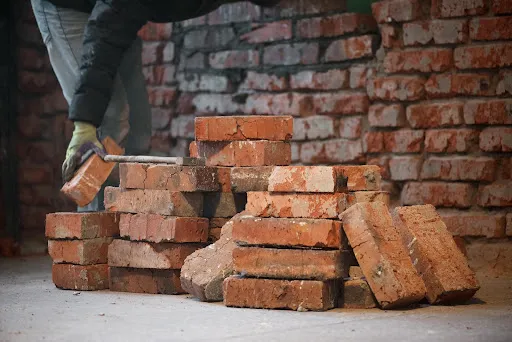In the ever-evolving world of construction, there’s a craft that stands the test of time, an artistry that dates back millennia, and a skill set that has built some of the world’s most iconic structures. This craft is masonry, and its practitioners, the masonry contractors, are the unsung heroes of architectural beauty and structural strength. In this article, we’ll explore the rich history, intricate techniques, and transformative influence of masonry and the skilled artisans who bring it to life.
Table of Contents
The Enduring Craft of Masonry
Masonry is a construction technique that involves the assembly of structures using individual units, often made of stone, brick, or concrete, bound together by mortar. This ancient craft has been instrumental in shaping our world and endures today due to its numerous benefits:
- Strength and Durability: Masonry structures are renowned for their robustness and longevity, with some standing strong for centuries.
- Thermal Performance: Masonry materials have excellent thermal mass, aiding in temperature regulation within buildings.
- Aesthetic Versatility: From the grandeur of Gothic cathedrals to the charm of colonial homes, masonry offers endless design possibilities.
- Fire Resistance: Masonry is inherently fire-resistant, contributing to the safety of structures and their occupants.
The Art of Masonry Construction
Masonry is not just a building technique; it’s an art form. Masonry contractors, the skilled craftsmen behind this art, bring a blend of science and aesthetics to their work. Their expertise encompasses:
- Material Selection: Masonry contractors understand the properties and characteristics of various materials, choosing the right ones for each project.
- Design Integration: They collaborate with architects and engineers to ensure that masonry elements seamlessly integrate into the overall design.
- Precision Work: The laying of each brick or stone demands precision, with contractors carefully aligning and leveling each unit.
- Mortar Mixing: The mortar that binds masonry units must be mixed to precise proportions, ensuring both strength and longevity.
- Artistic Details: Masonry often involves intricate patterns, arches, and decorative elements that require a keen eye for aesthetics.
The Transformative Influence
The impact of masonry extends far beyond construction:
- Architectural Grandeur: Iconic landmarks like the Taj Mahal and the Colosseum are testaments to masonry’s ability to create architectural masterpieces.
- Historical Preservation: Many historical buildings and landmarks have been preserved through meticulous masonry restoration.
- Residential Charm: Masonry adds character and curb appeal to homes, increasing their value and visual appeal.
- Structural Integrity: Masonry’s strength contributes to the safety and longevity of buildings.
- Sustainability: Masonry materials are sustainable and have a low environmental impact.
The Masonry Process
Masonry projects follow a structured process:
- Planning and Design: Detailed planning and design, often in collaboration with architects and engineers, ensure that the masonry elements align with the overall vision and structural requirements.
- Material Selection: Choosing the appropriate masonry materials, whether it’s brick, stone, or concrete, is a critical step in the process.
- Construction: Skilled masons meticulously lay each unit, adhering to the design and engineering specifications.
- Finishing: Masonry contractors often add finishing touches, such as intricate patterns or decorative elements, to enhance the visual appeal.
- Maintenance: Proper maintenance is essential to ensure the longevity and beauty of masonry structures.
Challenges and Considerations
Despite its time-tested advantages, masonry comes with challenges:
- Cost: Masonry can be more expensive than other construction methods due to the skilled labor and materials involved.
- Time: Masonry projects can take longer to complete than those using alternative construction methods.
- Weather Dependency: Weather conditions can impact the speed and quality of masonry work.





